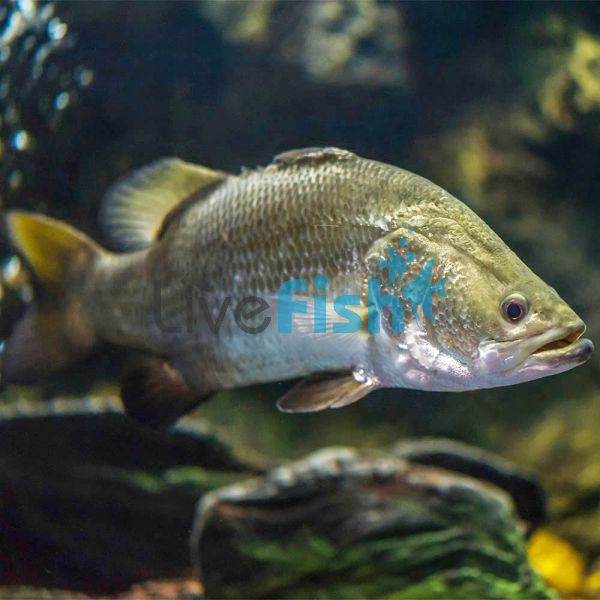Barramundi 3cm
Price is per Fingerling
There is no doubt Barramundi are one of the most popular and well known of Australia's fish
Juveniles are best kept in hard Alkaline water
Temperature: 22°C –30°C
pH: 7.2 - 7.8
General Hardness: 300 - 400 ppm. (Brackish)
There is no doubt barramundi are one of the most popular and well known of Australia's sport fish.
Interesting fact - All barramundi are born as males, reaching maturity at
around 3 to 4 years of age
Barramundi are usually a pale grey-green with a copper-silver shimmer. They generally exhibit a bright white stripe down the front of their face.
In the wild these fish have been recorded at 1.8 meters and 60kg, Barramundi can live to over 20 years of age. Aquarium specimens however are not expected to reach this size.
They spend the early part of their lives in fresh water until they reach sexual maturity. They then migrate downstream to the mouth of the river system where they meet the females, most of which have been living in the sea.
They spawn in the salt water then some of the males will follow the females out to sea and some will go back to the river. The males which go out to sea will change to females. Even barramundi which are unable to go out to sea will still change into females.
In the wild, large female barramundi can produce upwards of 32 million eggs in a season.
You should think very carefully before buying barramundi. Their demand for food is difficult to meet. They need a good supply of live food, such as small fish, shrimp, crayfish etc. They do not forage for food or eat aquatic vegetation. They are not fussy/ picky eaters though generally eating whatever is on offer, just be sure to offer a full diet variety.
Interesting Fact - A Barramundi’s age is determined by counting growth rings on their scales (much like counting growth rings on a tree).
One of the biggest problems will be when you want to add more fingerlings. Any barramundi remaining from earlier stockings will make a meal of the new fingerlings (or anything that fit in their mouth) of any species, which you introduce. Always ideal to have them in with fish of their size.
Juveniles are best kept in hard Alkaline water ·
Temperature: 22°C –30°C
pH: 7.2 - 7.8
General Hardness: 300 - 400 ppm. (Brackish)
Barramundi require a large sized tank with a slow continuous flow of water with the temperature and hardness remaining fairly consistent. They do not mind
being in clear or turbid water.
They also show a distinct preference for submerged driftwood, rock ledges and other structures, so making sure there is plenty of hides in the aquarium is essential.
Interesting fact - Barramundi have the potential to travel great distances in their lifetime. One fish that was tagged and released had travelled 622 kilometres before recaptured.
| Scientific Name | Lates Calcarifer |
|---|---|
| Care Level | Easy |
| Common Names | Barra, Asian Sea Bass, Giant Sea Perch |
| Diet | Carnivore |
| Fish Family | Latidae |
| Lifespan (years) | 20 |
| Max. Length (cm) | 150 |
| Min. Tank Volume (l) | 400 |
| Origin | Australia |
| Sociability | Semi-aggressive |
| Venomous | No |
| Water Conditions | Temperature 22°C –30°C, pH: 7.2 - 7.8, General Hardness - 300 - 400 ppm (Brackish) |




